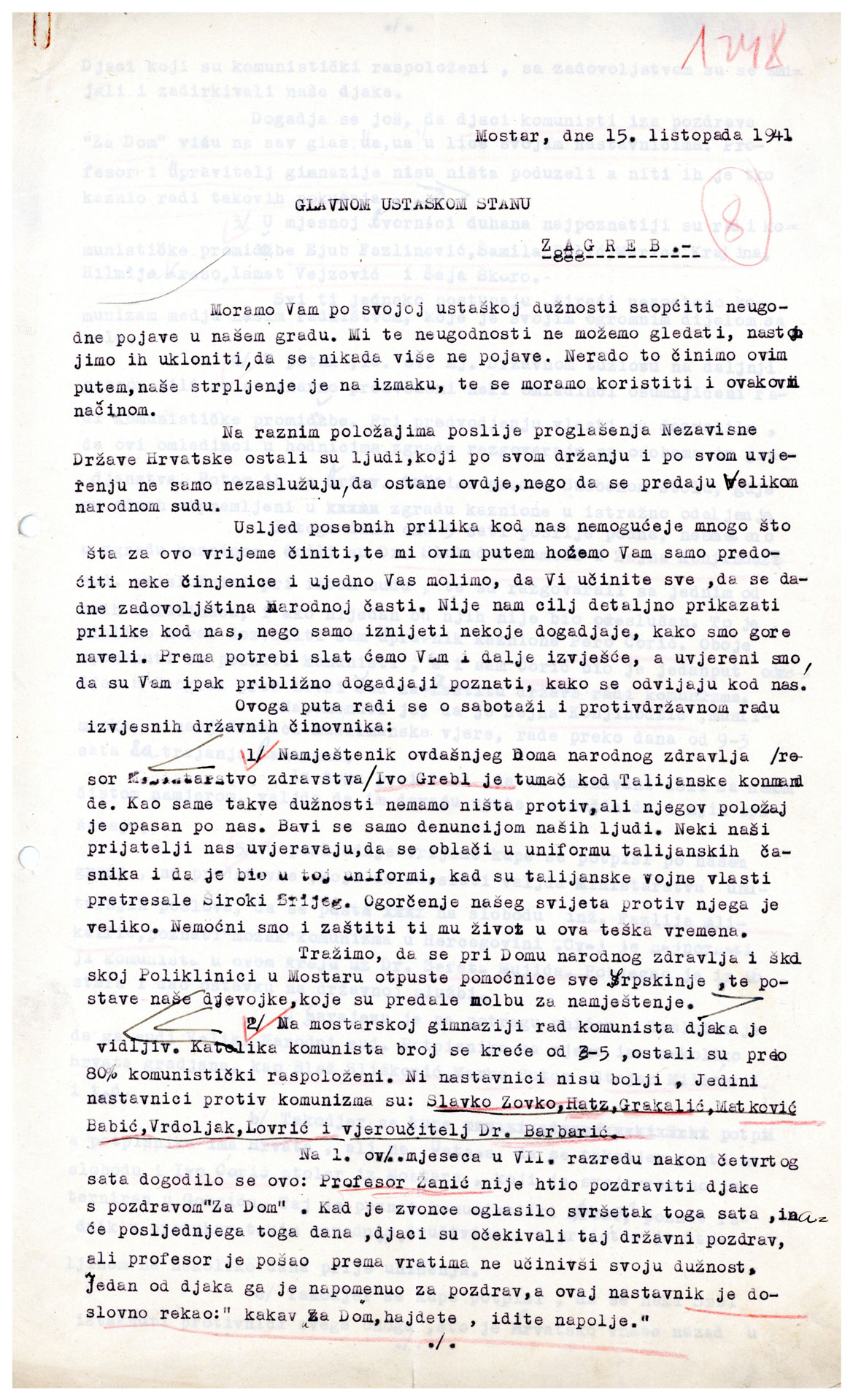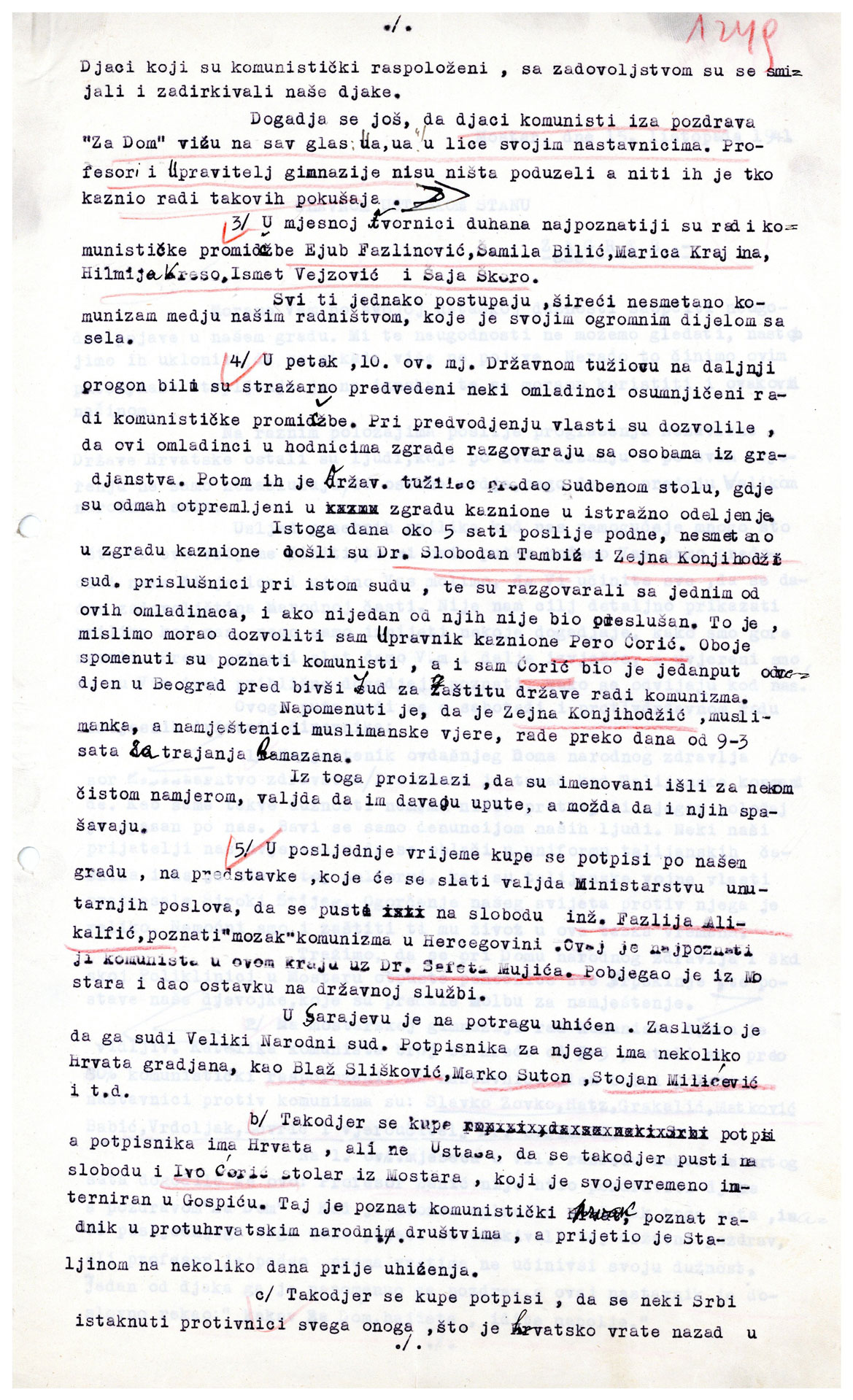The obedient student and the disobedient professor
During the existence of the Independent State of Croatia, the state ideology was heavily promoted and propagated through many different “mediums”, and school was one of them. Besides the changes to the curriculum, new books, and school calendar, another important change was the introduction of a new mandatory greeting “Za dom spremni!” (For homeland, ready!). But, as it turned out, not all professors and students saw it as such.
One of the few recorded examples of “silent” resistance and civil disobedience happened in Mostar Grammar School in October 1941. After each class, as the state dictated, professors were obligated to greet the students with “Za dom spremni!”, but Professor Žanić refused to follow the official protocol. Some of the students quickly reminded the professor about the new mandatory greeting to which the professor replied with “Kakav za dom, hajdete, idite napolje!” (What are you talking about – For homeland – go on, get out!). Such a reaction from the professor was met with widespread enthusiasm and cheers from the “communist-oriented” students who saw the opportunity to tease the “Ustasha-inclined” students. This “incident” was the subject of a detailed report by the Ustasha Surveillance Service about the number and attitude of “communist-oriented” students and professors in said school. Apart from that, there were several other cases where students were shouting at the top of their voices “Boo! Boo!” in response to their professors greeting them with “Za dom spremni” as the new state protocol mandated. Despite being a “serious” offense, professor Žanić and the students faced no consequences for this type of conduct from the principal of the Mostar Grammar School as the report mentions.
Original story by Kenan Dobrić and Tarik Aščić, adapted by Nedim Pustahija.



